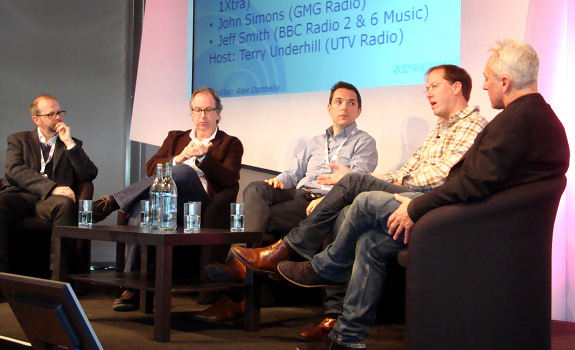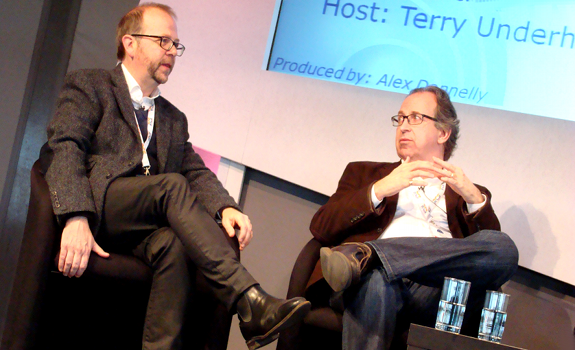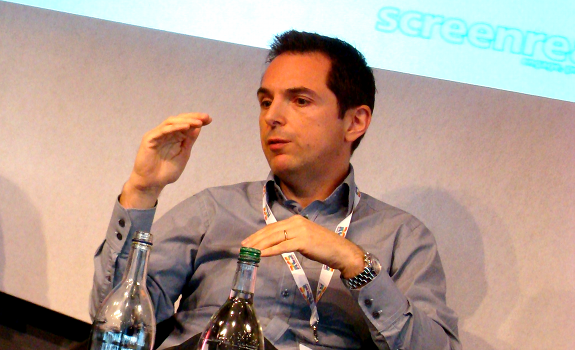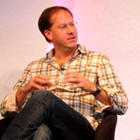Music scheduling without audience research and tight playlisting: can this work? Seems like it does, for BBC Radio 2. A search for the perfect balance between science and art.
Playing people’s favorite songs is a key factor in programming for heavy listeners and building a base station, is the lesson learned from PPM. But BBC Radio 2 reaches 14 million listeners – without music research, just know-how and gut feeling. Radio programmers and a researcher talked about these and other music scheduling topics at the Radio Festival 2011.
Learn music preference trends
George Ergatoudis, music director of BBC Radio 1 and Urban sister BBC Radio 1Xtra, is using research to find out where the cycle of music preference is going. “We want to understand whether a song or artist is connecting or not, but it doesn’t drive in the first instance where we want to go.” He explains that they don’t desire a mass appeal direction where you take all edges off and avoid any risk. So the BBC Radio 1 playlist is a mix of familiar mainstream and unknown progressive music.
“Research provides you with an educated gut”
Focus on relevant research
John Simons, group program director of GMG Radio, represents the UK’s commercial radio sector in this panel. “We probably spend more on music research than we ever did, and have had consistently good books over the last 18 months.” In his opinion “it’s not so much what you put into research; it’s what you leave out that’s the most important.” He considers music testing to be “a great tool, but not the whole story”.

Jeff Smith, John Simons, George Ergatoudis, David Courtier-Dutton and host Terry Underhill (photo: Thomas Giger)
Combine know-how and intuition
BBC Radio 2 is the most listened-to radio station in the world – reaching 14 million people – all without any music research. “Obviously it’s a big old radio station with lots of reasons why it would be successful”, says head of music Jeff Smith, who was a music director for Capital FM and BBC Radio 1 in the past. “Research provides you with an educated gut.” He experiences “tremendous” input from presenters and producers during music meetings about the BBC Radio 2 playlist.
“If there’s a great new song that’s testing like a dog,
we’ll still play it”
Give producers creative freedom
To what degree does BBC Radio 2 allow its staff to alter their show’s playlist? “We do a Powergold roll-out for both stations, which the producers then tweak. They have interaction with the audience, and I think they understand their listeners”, says Smith, who by the way is responsible for the BBC Radio 6 Music playlist as well. “I reckon that the tweakage will be around 25%. It’s quite organic. I’m prepared to take this, rather than spending lots of money on research – which I don’t think we can afford.”

Jeff Smith (left) reveals that BBC Radio 2 producers adjust a quarter of the scheduled playlist (photo: Thomas Giger)
Forget airplay and charts
Airplay guides and music charts are not the best guidelines for music selection anymore. Airplay charts are weeks behind, and record sales are volatile and almost negligible, says John Simons of GMG Radio. “That’s why we need some measurement. Research doesn’t naturally say: these are the songs you should play – it’s really difficult to test new music. But it gives you a feel of what will fit with your audience. You’ve got to factor in your gut instinct as well. If there’s a great new song that’s testing like a dog, we’ll still play it.”
“If we want to differentiate ourselves,
we cannot chase every hit”
Get proper song versions
BBC Radio 1 has a regular editorial standards meeting, where they talk about songs that have issues. It’s also being discussed in the weekly meeting with the station’s controller Ben Cooper, if they need a PD-level sign-off on a track. “We make sure to get the lyrics of every song that we think of putting on the playlist, and talk to record companies about edits that are suitable.” Because even only the title of Rihanna’s S&M would feel very uncomfortable for the public station – let alone the whole song.

George Ergatoudis explains why BBC Radio 1 never played the summer hit Move Like Jagger (photo: Thomas Giger)
Be different from competitors
The sound track of last summer for a generation of 18-year olds was Moves Like Jagger by Maroon 5 and Christina Aguilera. BBC Radio 1 didn’t play it at all. Why? “We’ve made a really deliberate decision”, music director George Ergatoudis explains. “If we want to differentiate ourselves, we cannot chase every hit. We feel that there is so much good music out there.” In this case, the explicit lyrics were the reason. Media regulator Ofcom recently issued stricter rules regarding the lyrics of songs that are being played on air.
“Research can actually
take you down the wrong route”
Keep old, attract young
John Simons is asking how BBC Radio 1 reconciles the fact that the average listener age is 33 and “still creeping up”. George Ergatoudis: “There’s a phenomenon that as people grow older, they want to keep feeling young and stay connected to the youth culture. It doesn’t matter how much you try to drive the age down; you can’t loose those listeners.” In terms of music policy, the station is focusing on the younger end (15-24 years). Simons then turns to Jeff Smith of BBC Radio 2, where the average listener is 50.
 Develop your own stationality
Develop your own stationality
As BBC Radio 1 listeners get older, could there be a point where the stations collide? Smith (photo) doesn’t see it happen, as BBC Radio 2 is focusing on the older end of the demo. “But this is why research can actually take you down the wrong route. You’re sort of saying that music is a demographic.” In his opinion, a station is not only about music; relevance and tone of voice matter just as much. “And the tone of BBC Radio 2 is very different.”
Avoid group station crossovers
Session host Terry Underhill, recently appointed as group program director for UTV Radio, calculates that BBC Radio 1 and 2 currently share 14% of their playlist. BBC Radio 1 head of music George Ergatoudis replies that both stations still “sound drastically different”. According to his BBC Radio 2 colleague, this percentage is “a seasonal thing”. The music crossover between BBC Radio 1 and 2 is usually around 4%.
“Young listeners still want a curator
but don’t care whether it’s a great deejay”
Consider different research methods
A different approach in music research comes from SoundOut. Instead of playing hooks in auditoriums and over the phone, they let people review songs on Facebook. Because it’s easy to find people of a certain demo, living a specific area. “We don’t claim to do anything else or more sophisticated”, says CEO David Courtier-Dutton. “But it’s accurate in predicting how a song will do within a certain demographic and region. We’re a starting point. Later you need call-outs to understand what your particular audience thinks.”
 Use unbiased blind testing
Use unbiased blind testing
Courtier-Dutton (photo) explains they use a double blind test. Because they’re are not being told who the artist is until they have rated the song, participants listen without prejudice and there is no artist perception bias. GMG Radio’s John Simons experienced that the public’s opinion about an artist can change. “We saw that with Duffy, and a few years back with Mariah Carey. The songs haven’t changed, but the public’s perception has.”
Stay young audience connected
David Courtier-Dutton sees his teenage kids listen to Capital FM. High repetition drives them to BBC Radio 1 until they hear a song that they don’t know or like, and end up lost at Heart or Magic – which they’ll soon find boring, too. “As soon as they’re home, they’re on the Internet.” Direct access to music makes that young listeners are used to instant gratification: “They still want a curator but don’t care whether it’s a great deejay, as long as the music keeps coming.”





Add Your Comment